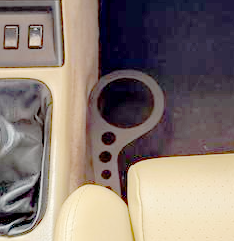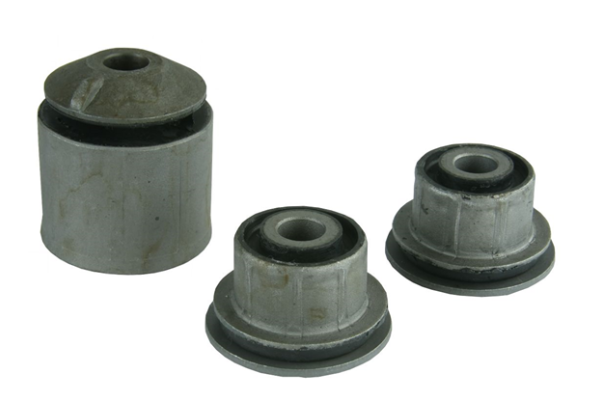Early in my career, I worked at a large industrial distributor doing catalog photo work. It was a fastener house among other things. The fastener testing lab was right next to my studio where the engineer there and I became friends doing technical & instructional materials. As a consequence, I became somewhat familiar with how fasteners work. Some of the anecdotal things I learned along the way documenting fastener failures apply to servicing one's Porsche.A bit of nomenclature:
A cap screw is only called a bolt when it is used in conjunction with a nut. Otherwise, it is called a cap screw, socket head cap screw, or hex head cap screw for example.
Steel is actually very elastic, much like a rubber band. A successful installation of a cap screw has to do with it being stretched by applying installation torque into its elastic range,. In most applications, it should only be stretched to the point where if released it will return to its original length. To ensure this, torque values are specified for various fastener grades & sizes, and application combinations. If installed within this range and the forces applied to the joint do not exceed the clamp load supplied by the installed fastener it will generally not come loose over time. If stretched beyond this point at installation or the joint is subjected to cycling forces beyond its clamping ability it begins to lose clamping force and is subject to failure. This is one of the reasons why torque values are specified for fastener joints on our cars. For our cars, almost every fastener joint has a factory installation torque value specified.
Both an under-torqued or over-torqued fastener invites its failure. Under torqued capscrews will invite loosening from load cycling and will fail. Over torquing will result in stretching the fastener where it loses some of its claiming ability and will also fail.
 |
| A stretched Cap screw |
Many joints held by fasteners in our cars are in material that is too soft to bring the faster into its elastic range. In such cases, things such as a thread locking compound or lock washers are used to keep the fastener from coming loose. An example in our cars is the steering rack mount where the steel fasteners are threaded into soft aluminum. A very low torque value is specified and a locking compound is pre-applied to the fastener intended to keep the joint from loosening. This is probably why the factory does not recommend reusing these fasteners as the compound may have become compromised.
A lower grade capscrew has a lower capacity for clamp loading
and so a lower installation torque value. However, it generally has a broader elastic range than a higher strength (grade) one and so is more forgiving as to the exact torque applied when mounting them. This is why in many applications where a failure would be catastrophic many times the engineer specifies multiple lower grade fasteners versus fewer higher strength (grade) fasteners to achieve a desired total clamping capacity.
 |
| Three Grades of Cap Screws |
 |
A Fastener clamp load
testing machine |
Similar thinking is likely applied to our cars when it comes to wheel mounting. A five-bolt pattern where each wheel nut is torqued to 96 foot-pounds of torque is used on the wheels intended for street use whereas a single center locking attachment fastener mounted with an astounding 442 foot-pounds of torque is used in certain racing applications. Center lock wheels create a single point of attachment and so a single point of failure and so must be mounted very carefully with properly calibrated torquing tools, using specific lubricants, inspected often, and worn attachment components replaced regularly to avoid catastrophic failure. This is not practical or achievable in a typical retail servbicing or tire shop.
This also suggests when one returns home from a retail servicing/tire shop where the wheels have been removed one can consider loosening the wheel nuts and retorquing them in a star sequence at home with a known good click style torque wrench to ensure their proper mounting. For dry wheel studs & nuts on a 993 the wheel mounting studs should be tightened to a torque value of 130Nm or 96 ft-lb.
A general-purpose click-stop torq wrench can generally be accurate within +/- 4% between 20% to 80% of its torque setting range and is less accurate at the ends of its torque setting range. The accuracy of a given new wrench is usually listed in its documentation. To retain its accuracy its adjustment vernier should be unscrewed to the low side of its value range to release its internal spring's loading during storage and occasionally tested and calibrated.
Depositing skin oils on a cap screw's dry threads by simply touching them will profoundly influence the clamping load produced for a given applied torque value. This is why torque values are specified for dry or lubed threads and for critical applications the threads need to be cleaned before using the torque wrench with dry value specifications.
 |
| Typical Torque Cart for Lubed/Dry Fasteners |
Washer tech:
A minute scratch on the fillet radius where the head of a capscrew meets the shank profoundly weakens the fastener by providing a propagation point for a head failure (pop-off)Washers have a top and a bottom, the top being smooth bottom having rough stamped edges. If a washer is put with the bottom facing the cap screw head it can score the fillet radius where it meets the fastener head and significantly weaken the fastener.
On our cars, a critical joint, where having the washer faced up under the capscrews ( 900-119-030-02) are the screws holding the front seats down. If the washers are placed with the sharp face faced up under the capscrews it can seriously compromise the attachment of the seats.
If you found this page informative return to the main page and bookmark it for future 993-related servicing, repair, and upgrading guidance & information.






































